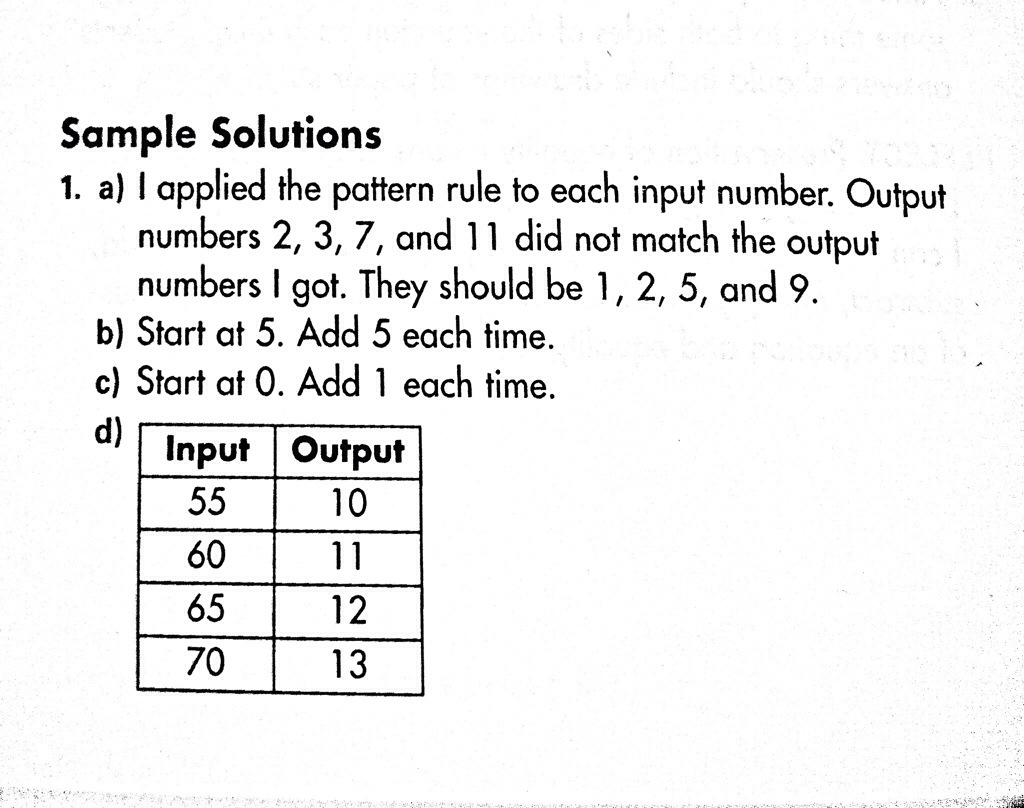While teaching sixth grade math yesterday, I came across this tricky question in the “Pearson Math Makes Sense” textbook. Unfortunately, it didn’t take long for things to not make sense.
The book shows the following input / output table.
| Input | Output |
|---|---|
| 5 | 0 |
| 10 | 2 |
| 15 | 3 |
| 30 | 7 |
| 45 | 8 |
| 50 | 11 |
It notes that some of the outputs were intentionally incorrect and asks students to identify and correct the mistakes. That was easy enough but it then asks students to “Write the pattern for the input.”
This is where I became lost.
Assuming the input numbers are correct, I just couldn’t figure out the pattern. I even typed it into Wolfram Alpha hoping it would help, but the response left me even more puzzled. It suggested a continuation of 5, 10, 15, 30, 45, 50, 35, -10, -95, -230, -425, -690…
Yikes! At this point the pattern isn’t even linear! I guess technically it never was…
As a last resort I turned to the textbook answer key and found this:
b) Start at 5. Add 5 each time.
Clearly, with the numbers 20, 25, and 35 nowhere to be seen, something else must be going on…
So, rather anti climatically, I think it boils down to a typo in the book. Any ideas? Throw them my way in the comments.
Here’s the page in question:




Hi there,
I’m also a teacher and I’m stuck on the same question. The sample solution doesn’t make sense. It could if they have said that some terms are missing etc., but I think that’s the only solution.
Hi uh.. I’m a student and this doesn’t make sense-????????